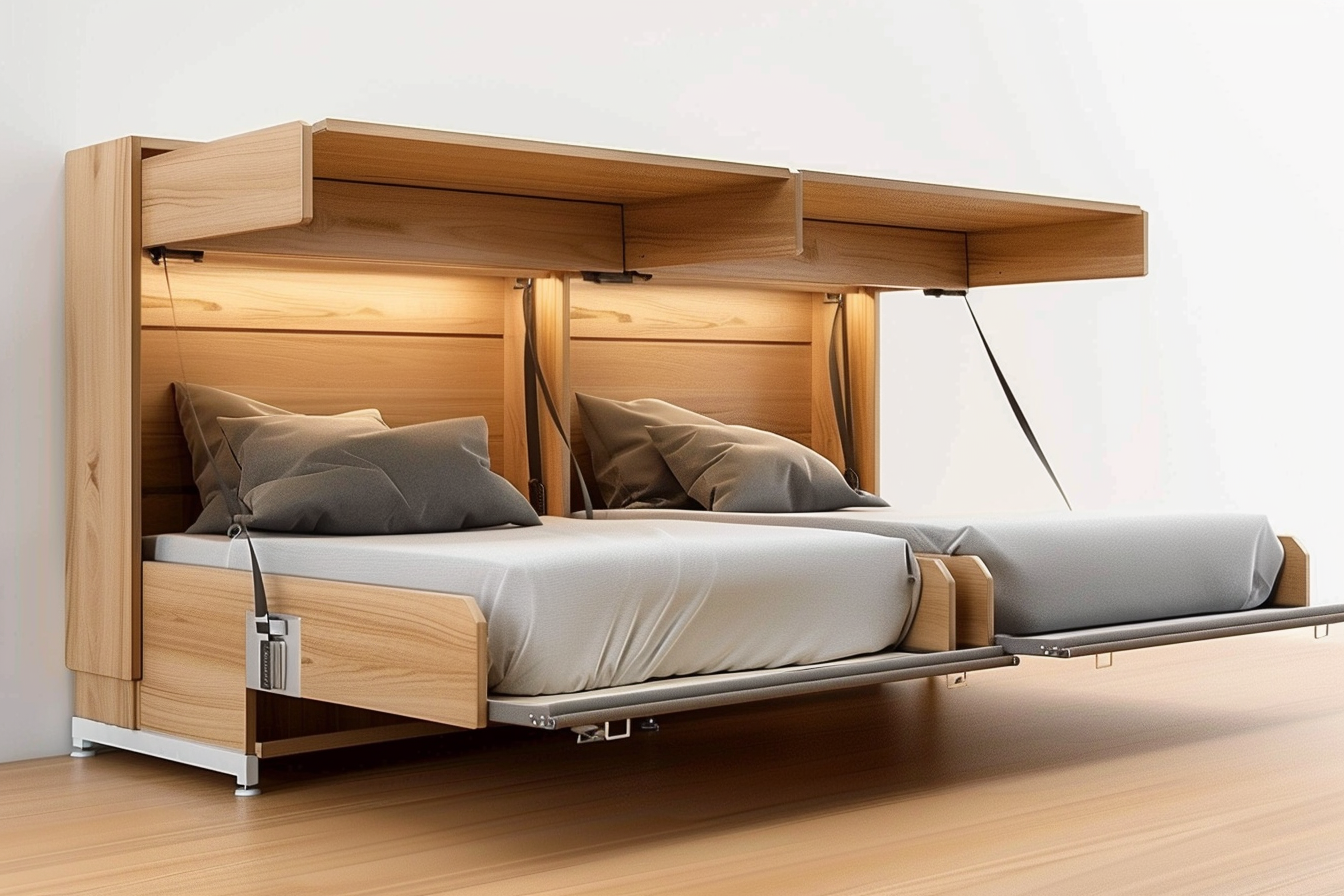How Folding Beds Work and Where They Are Used
Folding beds are clever pieces of furniture that can be folded up when not in use and opened when someone needs to sleep. Learn how they are designed, the different types you can find, and practical ways people use them in homes, guest rooms, and small spaces.

Understanding Folding Bed Design Principles
Folding beds operate on simple yet effective mechanical principles that enable them to transition between compact storage and functional sleeping surfaces. Most designs feature a central folding mechanism, typically a hinge system, allowing the bed frame to collapse inward. This fundamental design element can take several forms depending on the bed type. Rollaway beds feature frames that fold in half or thirds with wheels for mobility, while cabinet beds conceal within furniture pieces using slide-out mechanisms. Wall beds (Murphy beds) employ sophisticated counterbalance systems using pistons or springs to facilitate easy vertical folding into wall cabinets. These engineering principles focus on creating stable sleeping surfaces that can be easily manipulated by users of varying strength levels.
Popular Portable Guest Bed Options for Visitors
When accommodating overnight guests, portable folding beds provide practical solutions without requiring dedicated guest rooms. Lightweight rollaway beds featuring metal frames and wheels can be quickly deployed and stored away as needed. Folding ottoman beds represent another innovative option, appearing as standard footrests during the day while concealing a folding mattress inside. For more casual overnight stays, tri-fold mattresses provide convenient sleeping surfaces that can be folded into compact forms for closet storage. Japanese-inspired folding futons offer dual functionality as both seating and sleeping surfaces, making them particularly valuable in multipurpose rooms. The portability factor makes these beds ideal for homes that occasionally host visitors without maintaining permanent guest accommodations.
Space-Saving Furniture Innovations in Modern Living
The increasing prevalence of smaller living spaces has driven significant innovations in space-saving furniture, with folding beds at the forefront of this evolution. Contemporary designs seamlessly integrate folding beds into multifunctional furniture pieces that serve dual purposes. Sofa beds feature mechanisms that transform seating areas into sleeping surfaces within seconds. Wall bed systems with integrated desks or shelving create workspaces during the day that convert to bedrooms at night. Cabinet beds resemble standard storage furniture when closed but open to reveal full-sized sleeping areas. These innovations address the challenges of limited square footage by maximizing the utility of each piece of furniture, allowing rooms to serve multiple functions without compromise.
Memory Foam Folding Bed Comfort Technology
The integration of memory foam technology has revolutionized the comfort level of folding beds. Unlike traditional spring mattresses that often created pressure points when folded, memory foam materials can withstand repeated folding without structural damage. These specialized mattresses typically feature multiple layers, including a high-density support foam base for durability and upper comfort layers that conform to body contours. Many designs incorporate gel-infused memory foam to regulate temperature and prevent the heat retention common in standard foam. Some manufacturers employ compression technology that allows thicker memory foam mattresses to be tightly folded without damaging their internal structure. This advancement has significantly elevated folding beds from merely functional pieces to genuinely comfortable sleeping options.
Essential Rollaway Bed Features for Durability
The functionality of rollaway beds depends heavily on several key design features that enhance their durability and usability. Frame construction represents the most critical component, with steel frames offering superior strength compared to aluminum alternatives, though potentially adding weight. High-quality locking mechanisms prevent unwanted folding during use, while robust wheel systems with locking capabilities ensure stability when deployed and mobility when needed. Weight capacity ratings typically range from 250 to 400 pounds, with commercial-grade models supporting higher limits. Support systems have evolved from traditional springs to tension wires or wooden slats that provide more even weight distribution. Protective frame padding prevents wall damage during storage and movement, while mattress retention straps secure bedding during transport and storage.
Where Folding Beds Are Commonly Used
Folding beds find practical applications across numerous settings beyond residential homes. In hospitality environments, hotels keep rollaway beds for accommodating extra guests in standard rooms. Healthcare facilities utilize medical-grade folding beds with specialized features for patient overflow situations or family members staying with patients. Educational institutions like dormitories and boarding schools maintain folding beds for temporary accommodation needs. Emergency response organizations deploy folding beds during crisis situations requiring temporary shelter. Vacation rentals and short-term accommodations frequently offer folding beds to increase sleeping capacity without permanently dedicating floor space. Even outdoor recreational activities benefit from portable folding beds in camping scenarios, particularly in glamping settings where comfort expectations exceed traditional camping equipment.
Folding Bed Maintenance and Care Considerations
Maintaining folding beds properly extends their lifespan and ensures consistent functionality. Regular inspection of mechanical components, particularly hinges, locking mechanisms, and wheels, prevents operational failures. Lubricating moving parts according to manufacturer specifications reduces wear and friction damage. Mattress care requires periodic rotation to prevent uneven compression, along with protective covers to guard against moisture, dust, and stains. When storing folding beds, maintaining them in their fully folded position in dry environments prevents frame warping and mattress damage. Following weight capacity guidelines strictly prevents frame bending and structural weakening. With proper maintenance, quality folding beds can provide reliable service for many years, making them cost-effective long-term investments for occasional sleeping needs.




